It has been a long time since the last post of my Blog --- 建筑十日谈 ,which actually means "To Talk about Architecture Topics in Ten Days" in English. During the long time's break, I decided to travel from 20th century's China back to 1950's USA. Here on Day No. 4 --- I would like to talk about two famous "Glass Houses" in Architecture history, therefore to introduce you another two Architects --- Ludwig Mies Van Der Rohe and Philip Johnson.Welcome to the Day No. 4.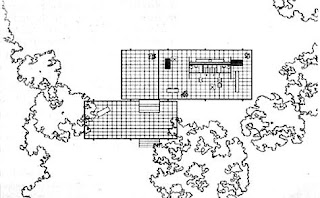
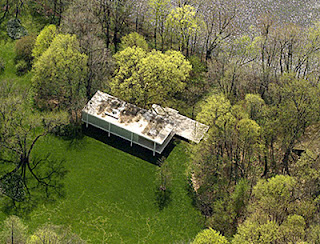
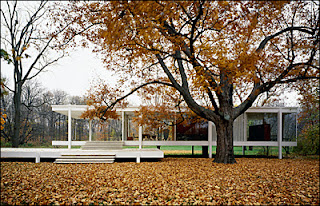

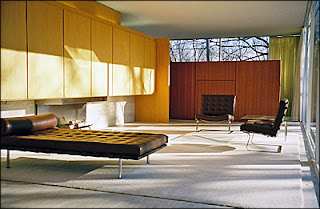
Farnsworth HouseArchitect: Ludwig Mies Van Der Rohe (1886 - 1969)

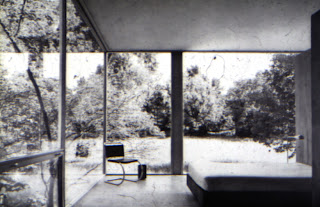
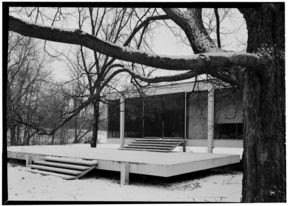
The Farnsworth House, designed and constructed by Ludwig Mies Van Der Rohe between 1945-51, is a one-room weekend retreat in a once-rural setting, located 55 miles southwest of Chicago. The steel and glass house was commissioned by Dr. Edith Farnsworth, a prominent Chicago-based kidney specialist, as a place where she could enjoy nature and engage in her hobby, translating poetry. Mies created for her a 1,400 square foot house that is widely recognized as a masterpiece of modernist architecture. The home was designated a National Historic Landmark in 2006, after joining the National Register of Historic Places in 2004.
The essential characteristics of the house are immediately apparent. The extensive use of clear floor-to-ceiling glass opens the interior to its natural surroundings to an unprecedented degree. The simple rectilinear form is barely defined by exposed steel structural members painted pure white. The house is elevated and seems to float weightlessly above the ground it occupies. The interior appears to be a single open space, free of interior supports, ebbing and flowing around two wood-clad boxes; one a wardrobe closet and the other a fireplace core enclosing toilets and mechanical equipment. The house is essentially one large room with a freestanding wardrobe and a central fireplace core that provide subtle differentiation between open spaces. Very private areas such as toilets, and mechanical rooms are enclosed within the core. The free flow of space around the interior elements is a key feature of Mies efforts to express his ideas.
The house is located on a 60 acre estate site adjoining the Fox River (Illinois) near the city of Plano, Illinois. Mies conceived the building as an architectural shelter simultaneously independent of and intertwined with nature. Mies did not build on the upland or sloped portions of the site, choosing instead to tempt nature by building on the flood plain near the rivers edge. The enclosed space and a screened porch are elevated five feet on a raised floor platform, just slightly above the 100 year flood level, with a large intermediate terrace level. The levels of the platforms restate the multiple levels of the site, in a kind of poetic architectural rhyme. The house is anchored to the site in the cooling shadow of a large and majestic maple tree. As Mies often did, the entrance is located on the sunny side facing the river, forcing visitors to turn corners and view the house from various angles when approaching the house. The simple elongated cubic form of the house is arranged parallel to the flow of the river, and the terrace platform is slipped downstream in relation to the elevated living platform. The careful site design and integration of the exterior environment represents a subtle yet concerted effort to achieve an architecture wedded to its context.
The Architect and his works:
Ludwig Mies van der Rohe (born Maria Ludwig Michael Mies) ( March 27, 1886 - August 17, 1969 ) was a German architect.
Ludwig Mies van der Rohe, along with Walter Gropius and Le Corbusier, is widely regarded as one of the pioneering masters of modern architecture. Mies, like many of his post WWI contemporaries, sought to establish a new architectural style that could represent modern times just as Classical and Gothic did for their own eras. He created an influential Twentieth-Century architectural style, stated with extreme clarity and simplicity. His mature buildings made use of modern materials such as industrial steel and plate glass to define austere but elegant spaces. He developed the use of exposed steel structure and glass to enclose and define space, striving for an architecture with a minimal framework of structural order balanced against the implied freedom of open space. He called his buildings "skin and bones" architecture. He sought a rational approach that would guide the creative process of architectural design, and is known for his use of the aphorisms “Less is more” and "God is in the details".
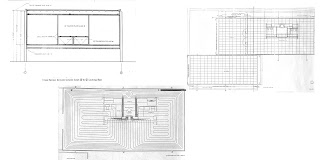

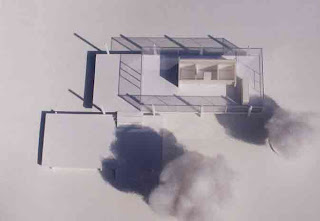
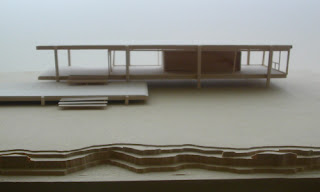

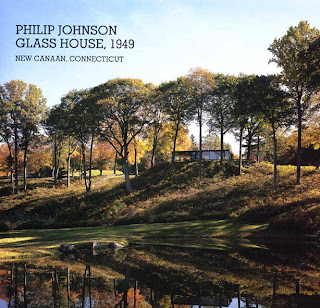
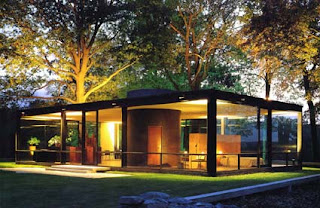
Philip Johnson











































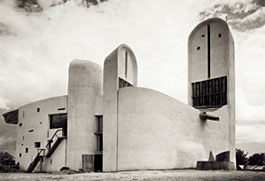


![[Abbildung]](http://www.dhm.de/lemo/objekte/pict/ba009950/index.jpg)




